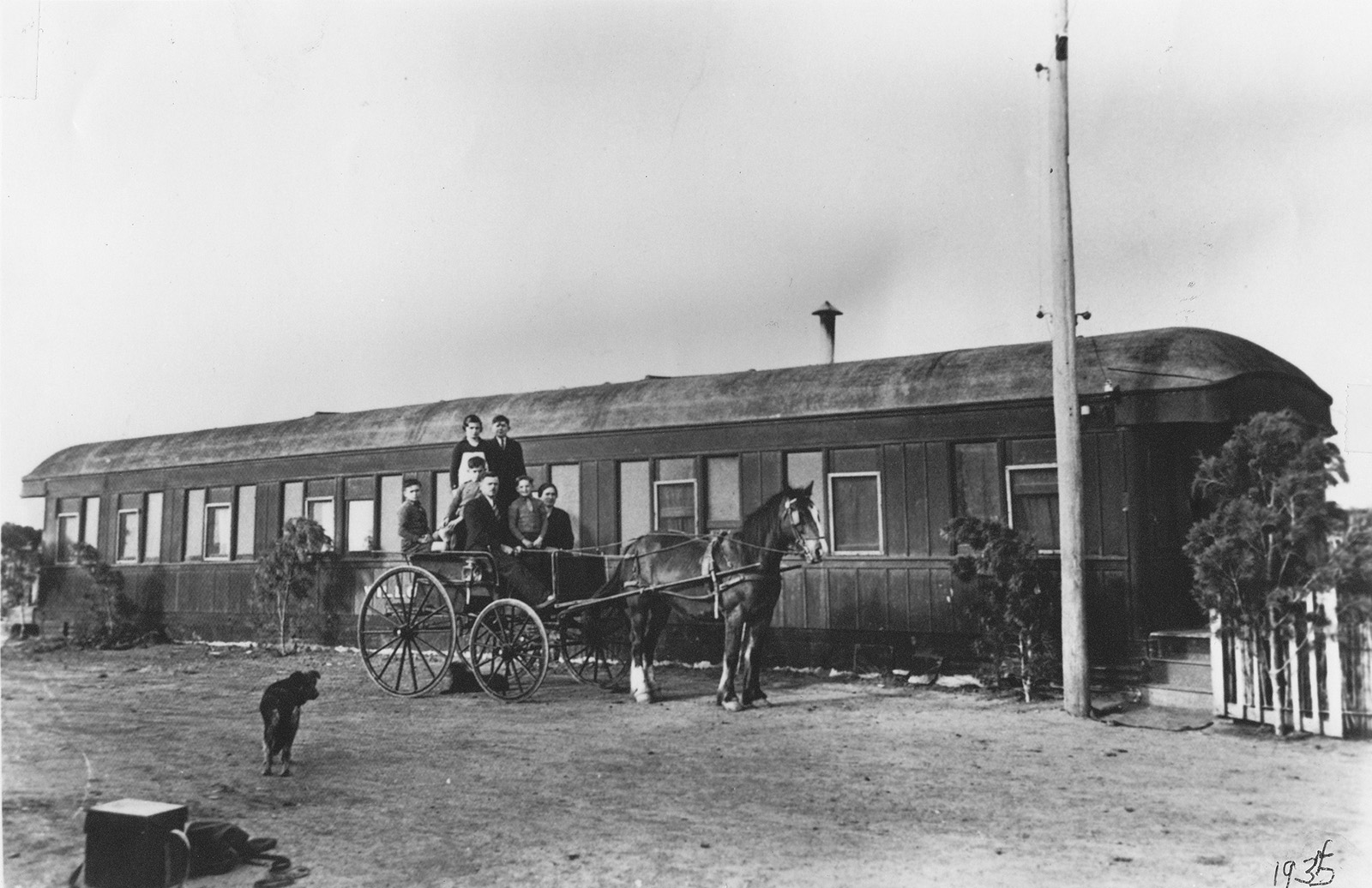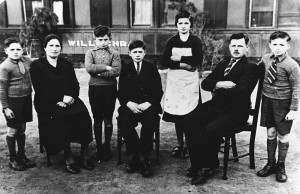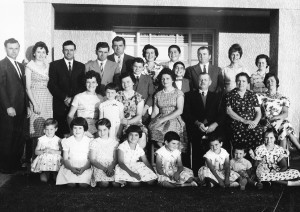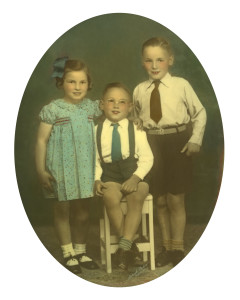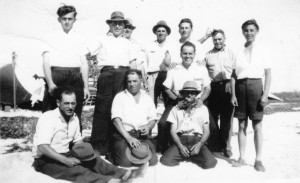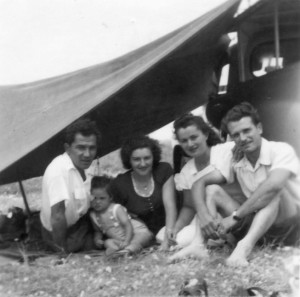Recently I talked with Johnny Marchioro about the busy summer months in the market gardens after the tomato season was over. I have included Johnny’s description and quotes from the interviews of some of the market gardeners about summer.
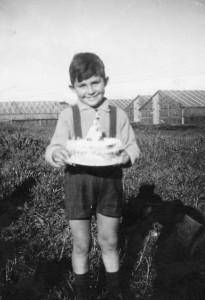
Johnny remembers from childhood: At the end of the season, we would clean up inside, cut down and remove the tomato plants and take the ends off the glasshouses. My Dad would put a very long rope on the horse and rip the soil with a small plough and then also dig by hand. It had to be level and ready for planting. The seeds were sown in January and were ready to plant in the glasshouses in mid-February.
Mary Tonellato nee Zoanetti 3 October 2008
Mary recalled her feelings about summer months: Well, I used to like my summers. I don’t like the cold weather that much. (laughs) … It was not scorching in the glasshouses, but outside it would have been … it was more steamy in the glasshouses.
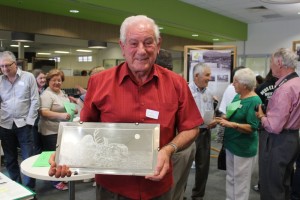
Dino Piovesan, 23 September 2011
Dino spoke about the work he and his brothers did in the market garden in summer … in the early years growing up, we would come home from school, and there was no such thing as doing your homework straight after you got home, especially in the summer months. It would be our job as kids to carry out the prunings, the leaves, of what Mum and Dad had pruned in the glasshouses, and once my older brother and I, because my younger brother was still a bit too young to do that, my older brother, Nillo, and myself, would be the ones to carry out the leaves. And eventually it was only after tea, as we call it, or after dinner as they say now, that we would have time to do our homework.
Anna Santin nee Mattiazzo 17 April 2013
Anna recalled the trips to the beach in summer …We used to take the kids there – there was no air-conditioning in the house those days – we used to take the children when it was really hot, for the kids to … otherwise, you know, they used to enjoy the beach. We used to go under the jetty [at Henley Beach].
Today, if you grow tomatoes in your backyard, you know that it requires constant work with watering, pruning, picking and once the tomatoes finish, the plants need to be cut down and the soil turned over. Imagine if you had 20 glasshouses and you had to tend to 14,000 plants! I have great admiration for the market gardeners and their hard work, especially the pioneers who dug their glasshouses by hand.
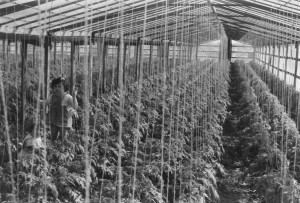
Madeleine Regan
9 February 2020
Fine di stagione nelle serre
Recentamente parlavo con Johnny Marchioro dei mesi estivi dopo che la stagione dei pomodori è finita.

Johnny mi ha detto del lavoro quando suo papà lavorava nell’orto: Alla fine della stagione pulivamo dentro le serre, tagliavamo le piante di pomodori e togliavamo i vetri alla fine delle serre. Mettevamo una corda molto lunga attaccata al cavallo e scavavamo il terreno con un piccolo aratro ed anche scavavamo con le mani. I semi erano seminati in gennaio e i germogli erano pronti ad essere piantati in febbraio.
Mary Tonellato nata Zoanetti, il 3 ottobre 2008 … Mary ricorda come si sentiva nell’estate … Mi piaceva tanto l’estate. Non mi piace tanto il freddo (ride) … Non era troppo caldo nelle serre però fuori era molto caldo. Ma dentro le serre c’era molto umido …

Dino Piovesan, il 23 settembre 2011 … Dino ha parlato del lavoro che faceva con i suoi fratelli nell’orto in estate … Nei primi anni quando stavamo crescendo, ritornavamo a casa dalla scuola e non era possibile fare i compiti quando arrivavi a casa specialmente in estate. Il nostro lavoro di bambini era quello di portare fuori le foglie della potatura che mamma e papà avevano tolto dalle serre. Quello era il lavoro mio e di Nillo, mio fratello più grande, e mio fratello [Bruno] più piccolo era troppo piccolo per auitarci. Eventualmente era dopo cena che potevamo finalmente fare i compiti.
Anna Santin nata Mattiazzo, il 17 aprile 2013 … Anna si ricorda dei viaggi che si facevano alla spiaggia in estate … Portavamo i bambini perchè non c’era l’aria condizionata nelle case a quell tempo. Portavamo i bambini quando faceva molto caldo -i bambini si divertivano alla spiaggia. Ci sedavamo sotto il ‘ponte’ [a Henley Beach].
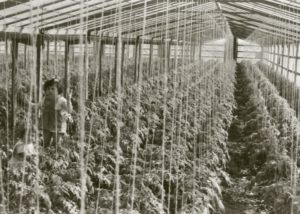
Oggi, se coltivate pomodori nel vostro giardino, sapete che richiede un lavoro costante con innaffiare, potare, raccoglierei pomodori per due or tre mesi. Quando la stagione è finita, le piante devono essere tolte e il terreno rigirato. Immaginate se si dovesse avere 20 serre o più! Dovreste attendere a 14,000 piante! Ho una grande ammirazione per gli orlticoltori – specialmente i pionieri che hanno scavato le loro serre a mano. hanno lavorato così duramente
Madeleine Regan
il 9 febbraio 2020
